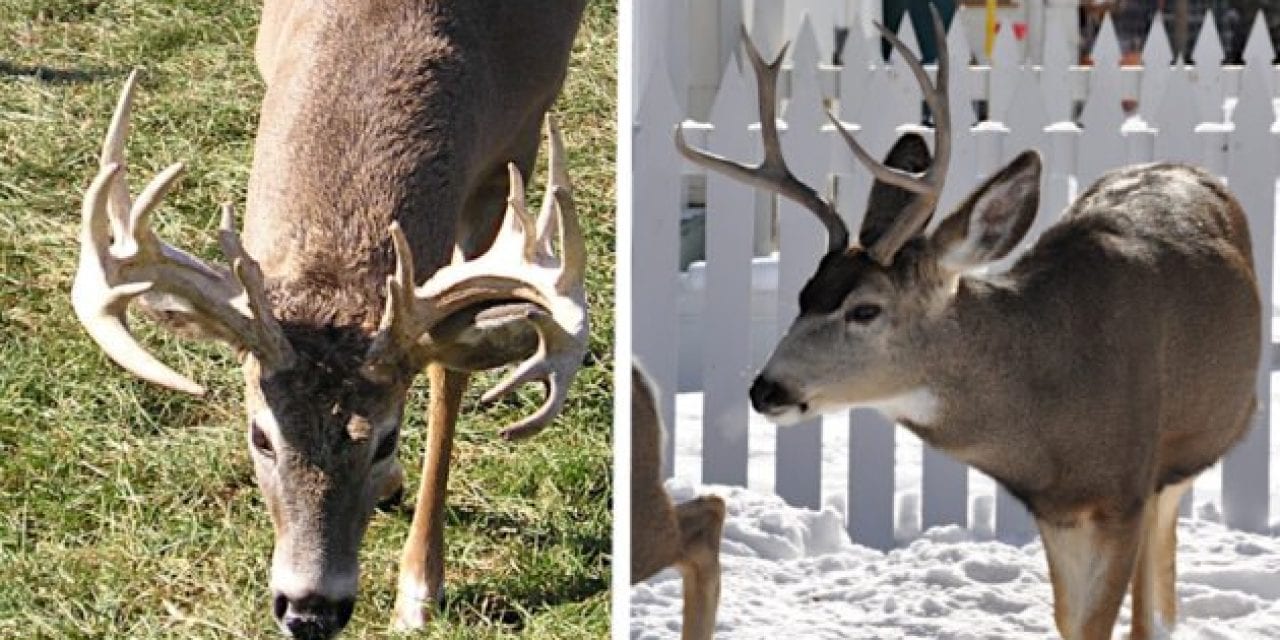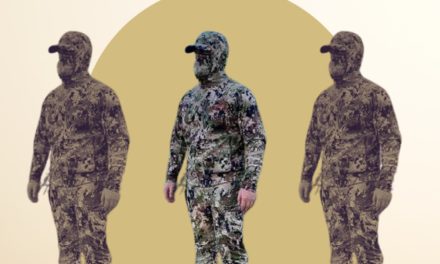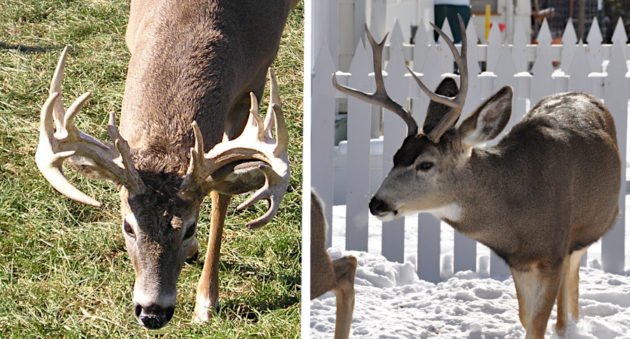
These are the major differences between mule deer and whitetails.
There are a few different deer species living here in North America. Sitkas, coues and axis to name a few. However, two species stand alone as the undeniable favorites of both nature enthusiasts and hunters. We are talking of course, about white-tailed deer and mule deer. These two game animals appear quite similar at first glance, but there is a ton of differences that set them apart.
Today we will look at those key differences to help you identify these two subspecies in the field. We will tell you their range across the United States and we will tell you where to find each species.
This is everything you wanted to know about these two animals including our opinions on which deer species reigns supreme.
The major differences between whitetail and mule deer
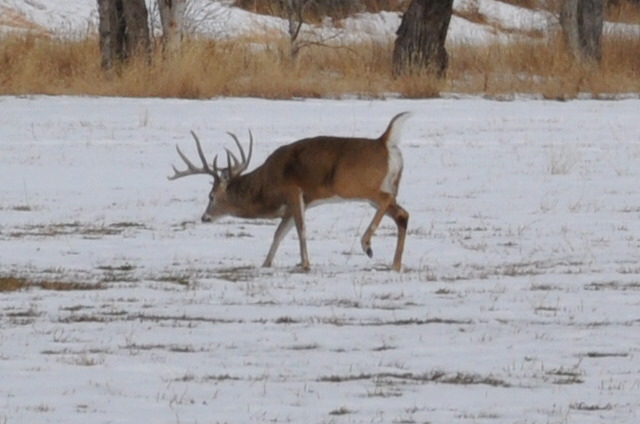
At first glance, these two species look quite similar. Their antler growth patterns are the same, the rut often runs at close to the same time for both species, and the food sources they inhabit can be identical where their ranges overlap. One must start looking at minute details to start noticing the differences.
The first thing I always look for is the ears. Muleys (Odocoileus hemionus) always have larger ears than whitetail deer. It is quite literally where the “mule” name comes from since the large ears resemble those of the barnyard animal. Body size is another good indicator. In general, mule deer are going to have larger bodies than whitetails. There are exceptions to this rule that I have personally observed while glassing both animals in the same field in Wyoming, but it is going to be easier to find a 250-300 pound or larger mule deer buck than a whitetail (Odocoileus virginianus).
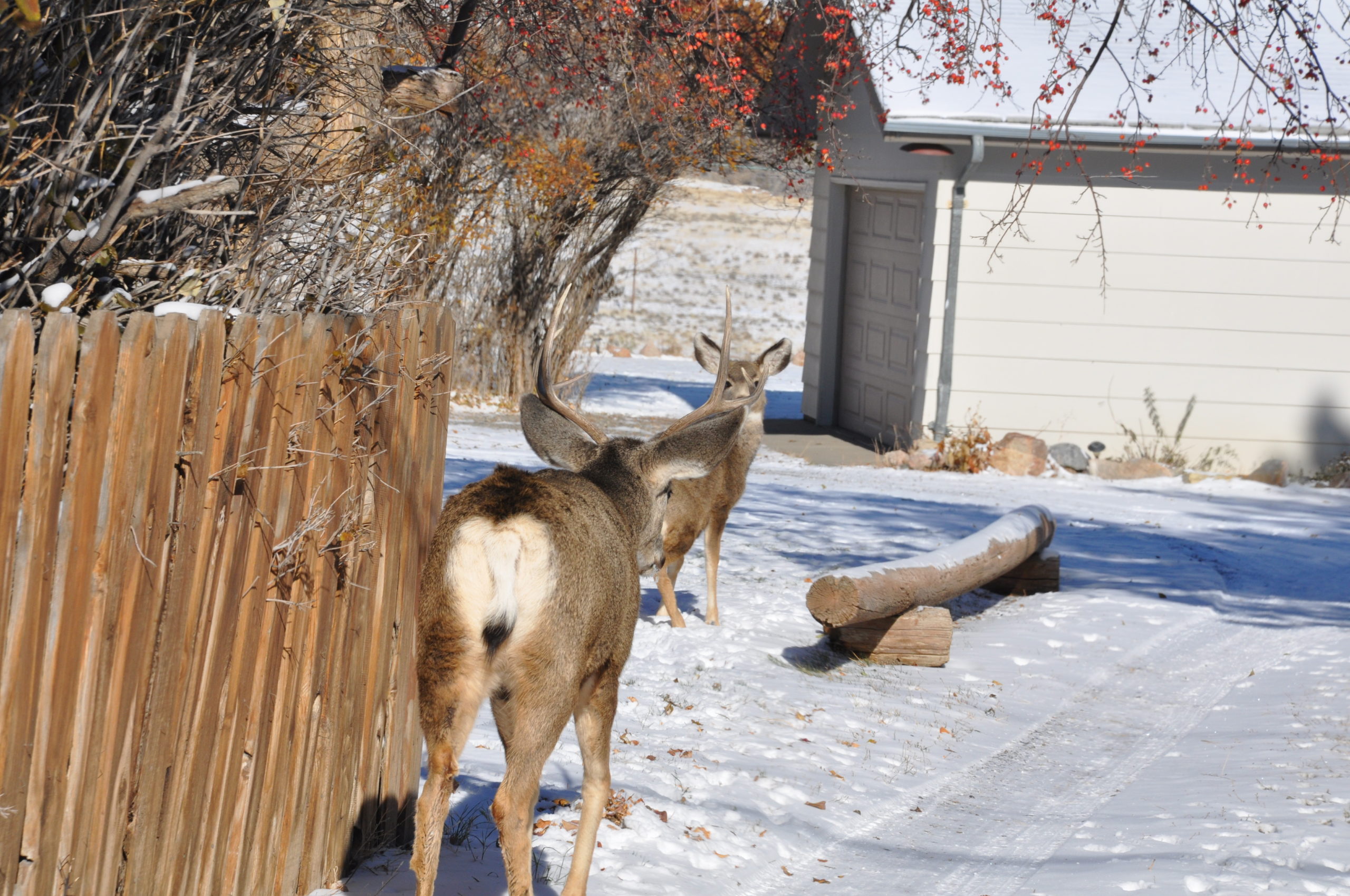
One of the easiest ways to tell the two species apart at a distance that I have found is to look at the rump end of the animal. Note the photo above of an urban mule deer that I took in Wyoming. Mule deer tend to have a skinnier tail with a black tip. Whitetail deer have a much broader tail with a white tip and underside. The whitetail also likes to flip the tail up when alarmed revealing a “flag” of warning to other deer in the area. If you see white running away from you at a high rate of speed, you just spooked a whitetail.
Coloration is also a major clue. Many whitetails have more of a reddish-brown hue through much of the year while mule deer take on more of a grey and black appearance, especially in the face and on the back of the ears. Whitetails have a distinct white underside and more prominent white features on their head than mule deer. There are exceptions to this of course, but in my experience, whitetails with darker features and grey tend to be older animals and are also more uncommon.
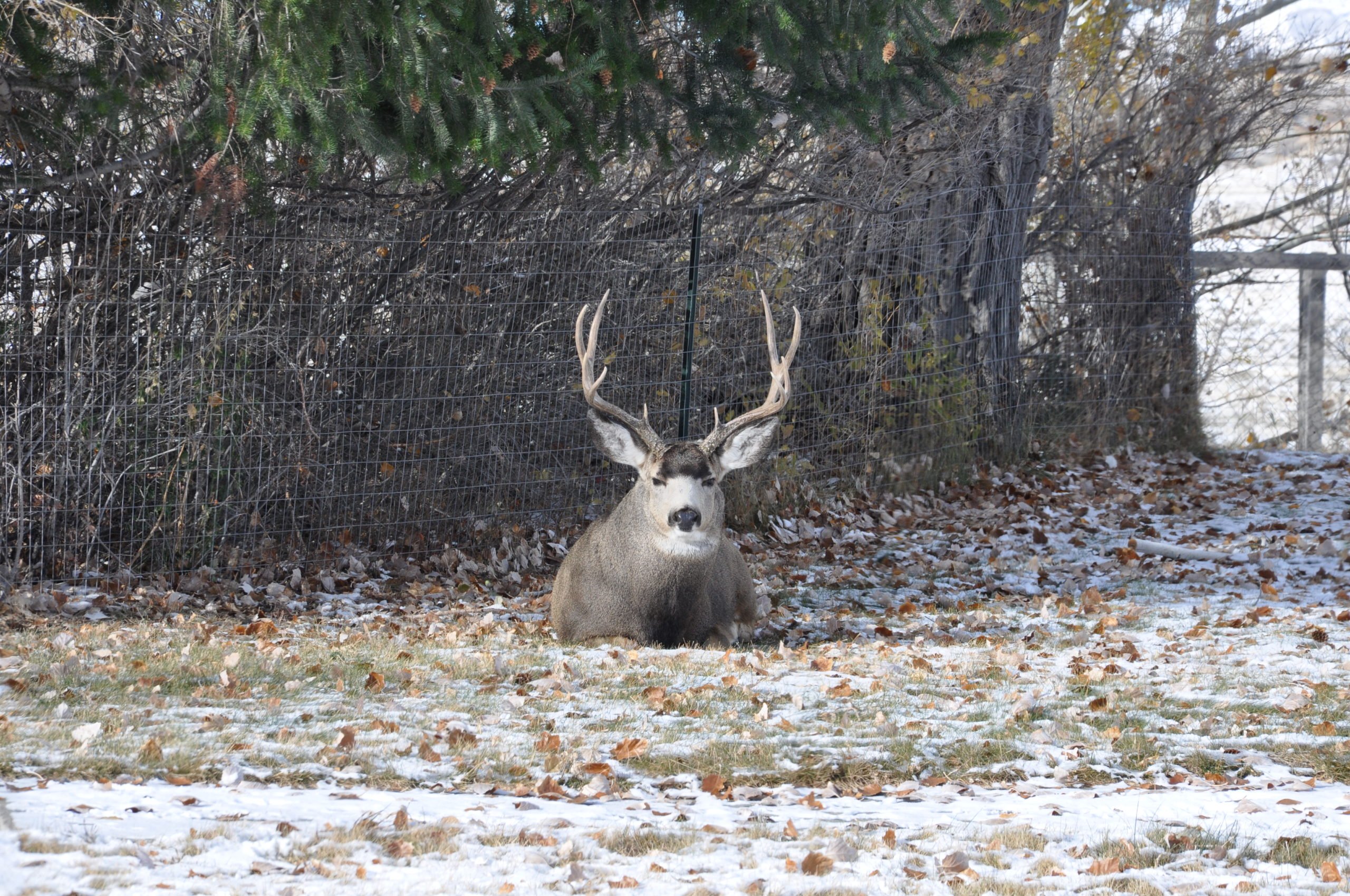
For bucks, the antlers are another distinguishing characteristic. In general, mule deer are going to have larger antlers than whitetails. Whitetails tend to have prominent brow tines while mule deer do not. For mule deer, their antlers tend to fork more prominently in the G2 tines. Again, I have seen exceptions to this, but it seems like whitetails tend to grow non-typical antlers at a higher rate than most mule deer. Mule deer antlers also seem to grow taller and wider than whitetails for the most part.
Mule deer vs. whitetail: behavior
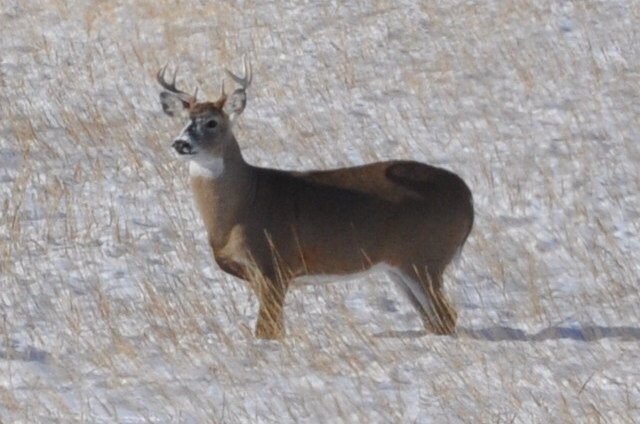
Another aspect of the differences between these two species is just how they behave. Beyond appearances, these animals have distinctly different personalities. Some of this behavior is factored by hunting pressure and habitat, but there are some general things to note when distinguishing them.
For one, it is extremely easy to identify a mule deer when it is fleeing. These animals often take off with a strange and hilarious hopping gait known to biologists as stotting. Why? Scientists still are not sure why mule deer engage in this behavior. Maybe it is because it helps them navigate the terrain better. Maybe it helps signal they are too healthy and fast to predators. Whatever the reasons, it is a tell-tale sign that the animal you just saw was a muley.
Whitetails on the other hand, apparently do not go for style points. They simply flip up their tail and take off running as fast as their legs will carry them. You may see them take long jumping strides while fleeing, but it is nowhere near as silly-looking as stotting.
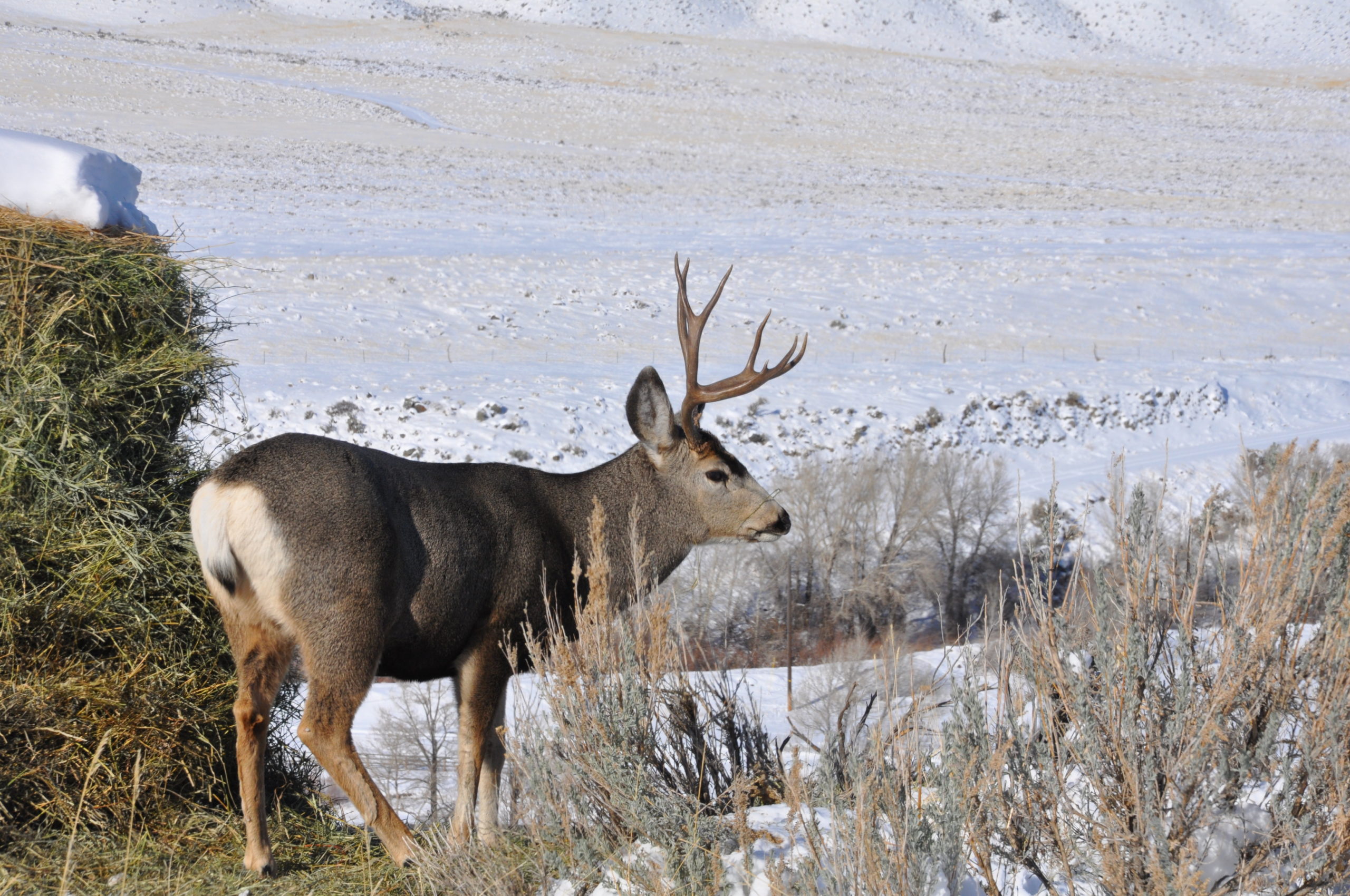
In my experience, whitetails seem to rely more on their noses than mule deer, which seem to use those large ears to detect the sounds of predators first. For some odd reason, whitetails seem to be more skittish than mule deer. It is confusing when you consider that a mule deer living in the west is going to have more natural predators like mountain lions, bears and wolves than a whitetail living in the Midwest that only deals with coyotes and humans.
Whatever the reasoning for this, I have found that mule deer seem more tolerant of humans and adapt better to living in urban environments than their whitetail cousins. Depending on who you ask, mule deer are sometimes considered easier to pursue by deer hunting enthusiasts too.
One aspect of mule deer behavior that bears mentioning is migratory patterns. While most whitetails will spend their entire lives in one general area, some mule deer will travel hundreds of miles a year between fall and winter habitats. In at least one documented case, a collared mule deer doe was recorded as having travelled 242 miles across the Rocky Mountains of Wyoming and Idaho before giving birth to her fawns. Her journey took her across mountain ranges, through two National Parks and multiple state forests. Scientists are not quite sure what prompted the doe to make these huge journeys, but they are learning more about deer migration patterns every year as a result.
Where each species lives
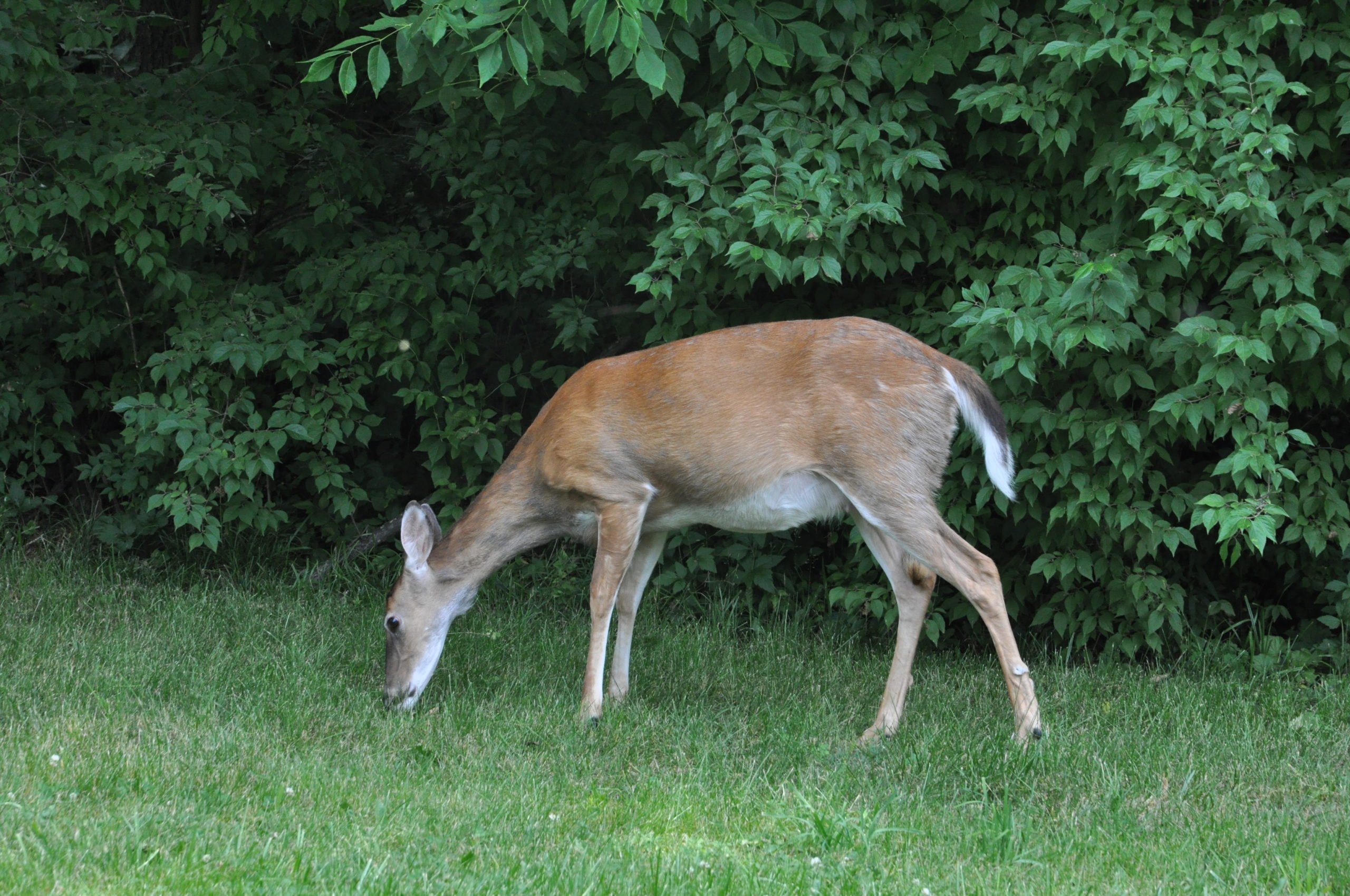
The range of both deer species overlaps in only a few areas. In general, whitetails are confined more to the eastern United States while mule deer own the west. Whitetails are found in every state east of the Mississippi River. Their range also extends over the river to west Texas, across the plains states of Oklahoma, Nebraska, Kansas and the Dakotas. These animals are also found throughout much of Wyoming, Montana and parts of Colorado, Idaho, Washington and Oregon. When you start diving into all the whitetail subspecies like Coues deer, their range extends far south into Mexico and Central America.
For mule deer, their range is slightly more confined. Small populations of muleys exist in the extreme western parts of states like the Dakotas, Nebraska, Kansas and the Oklahoma panhandle. A smaller population also lives in the extreme western part of Texas. Mule deer are extremely common through all of Montana, Wyoming, Colorado, Utah, Idaho, Nevada, Arizona and New Mexico. Subspecies like the blacktail deer live along the coasts of California, Washington and Oregon. Their range extends north all the way to Alaska.
Mule deer populations also stretch over the U.S. border down into Mexico where the species thrives on the dry desert sagebrush. For the most part, mule deer are thought of as a western species and in some areas they have become as iconic as the cowboy culture that surrounds them in many of these states.
Why you should hunt both
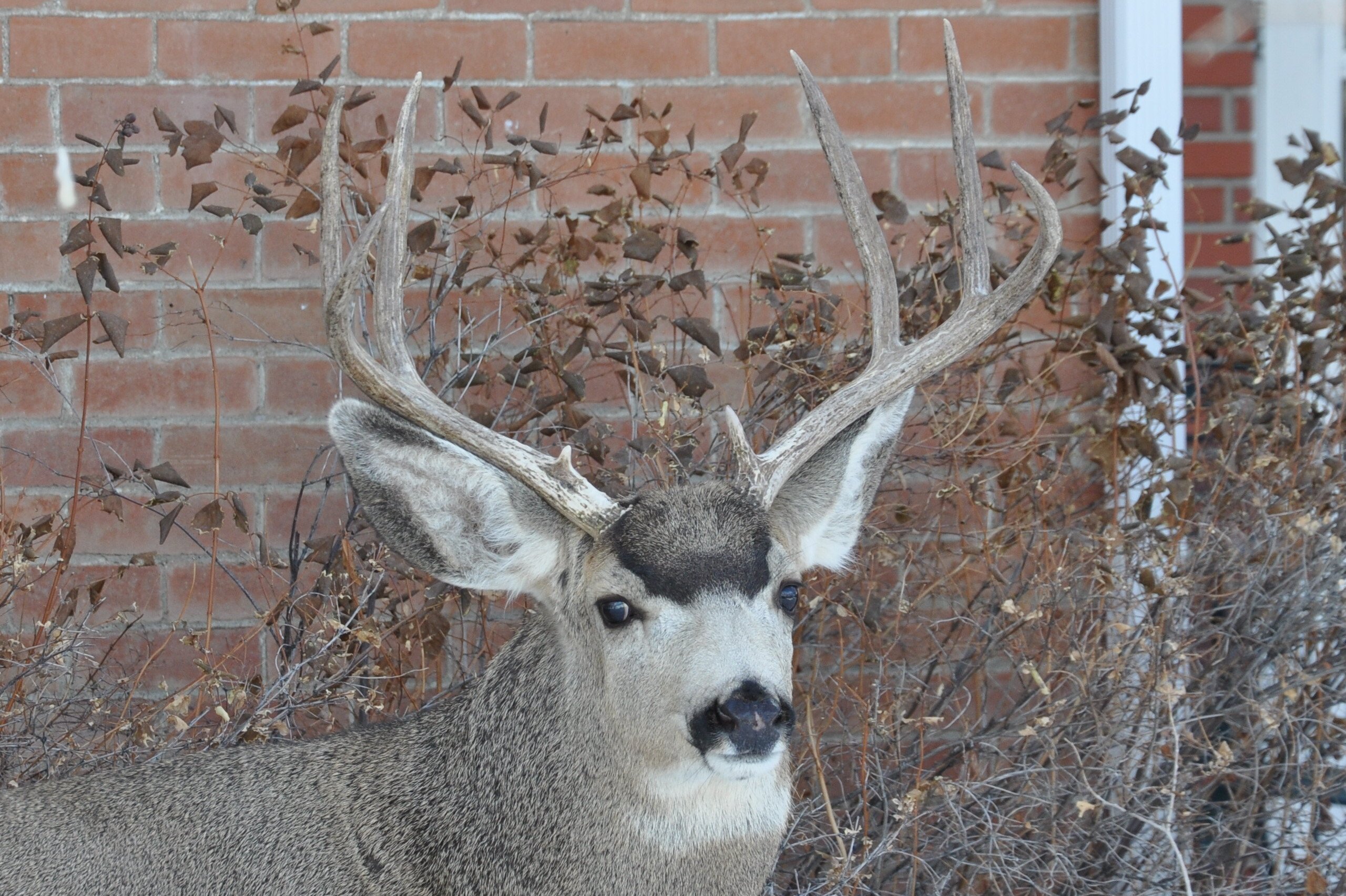
Here at Wide Open Spaces, we are of the firm believe that everyone should hunt both species, even if they only hunt one of them once in a lifetime. Why? Well, why not? Both are iconic North American big game animals that are beloved by hunters everywhere and both offer their own unique set of challenges.
If you are from the Midwest and are used to hunting whitetails over food plots with a treestand, what better way to test your hunting skills than by spot and stalking a big mule buck in the sage brush of the high desert with archery equipment? Targeting a new species is a great way to renew your love for hunting too. If you have gotten a little bored with mule deer in the west, maybe it is time to head east and try a whole new style of hunting.
It is good in life to try new things and expand your horizons every so often. This applies to all aspects of life, including hunting. Who knows? You may just find a new style of hunting you enjoy even more than the native deer species of your home state.
Which is better? Whitetail or mule deer?
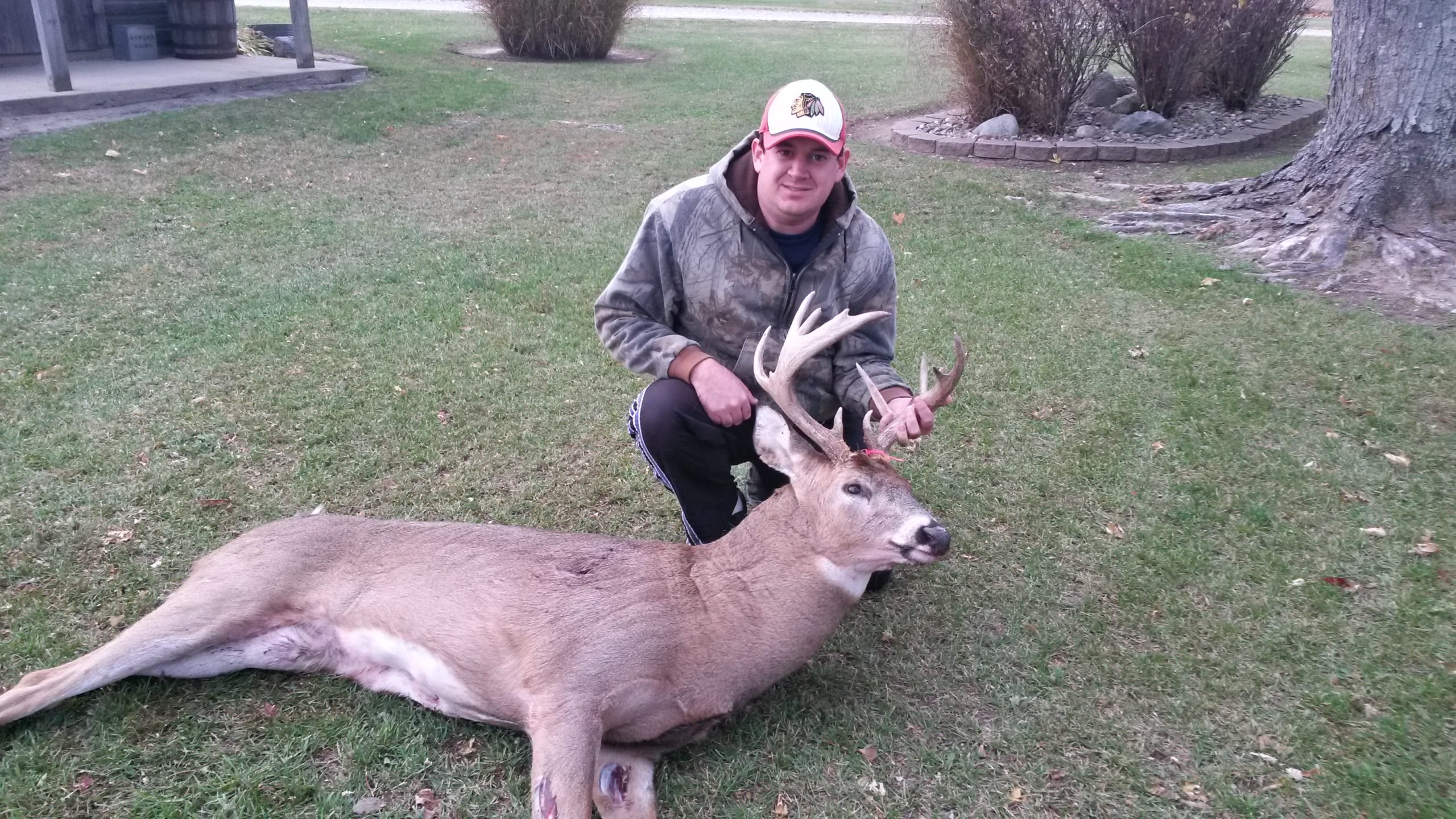
Honestly, this is a question where if you ask 100 different hunters, you will get 100 different answers. To be honest, these two animals are too evenly matched to pick a clear winner. Both are challenging for different reasons. Mule deer may not be as wary as whitetails, but you will still likely have to trek across some extreme terrain to find a good one. The elements are often much harsher in many mule deer habitats, testing your own toughness and equipment to an extreme level. Meanwhile whitetail hunting can be one of the ultimate tests of patience and strategy. Big bucks require you to pour over trail camera data, find patterns and select key times that are best for ambushing that big buck. One tiny mistake could ruin an entire seasons’ worth of work.
Some hunters boil this question down to taste. We have heard some say that “whitetails are gamey” or “mule deer are too tough.” Honestly, quality of venison probably depends more on how well the animal was butchered and prepared. I asked my co-workers and they agreed that there is not much difference in meat quality between them. Extreme examples would be an extremely old or rutted-up animal that likely will not taste that good to begin with, regardless of species.
Both species of animal have their own cool, distinguishing features that make them beautiful animals. It is too hard to rate the looks of one animal over the other. We love the sweeping spreads and giant forks of big mule deer, but we love a whitetail with giant brow tines, sticker points and antlers that are chocolate brown from rubbing pine trees in the Midwest.
In short, we are calling it a tie. These are two great big game animals that are well worth observing and pursuing. Get out and give hunting one or another a try this season. We guarantee you will be addicted and wanting to come back for more!
For more outdoor content from Travis Smola, be sure to follow him on Twitter and check out his Geocaching and Outdoors with Travis YouTube channels.
NEXT: THE AXIS DEER AND HOW THEY ARE IMPACTING PARTS OF THE UNITED STATES
WATCH
The post Whitetail vs. Mule Deer: The Differences, Why You Should Hunt Them and Which is Best appeared first on Wide Open Spaces.


